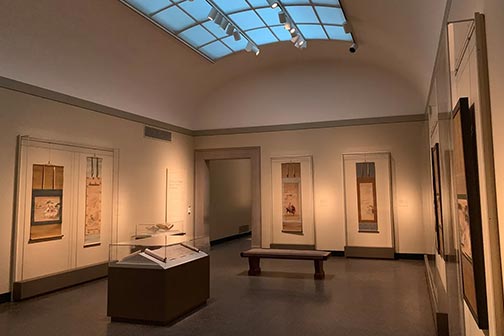Exhibitions can entail major potential for damage to museum collections. Objects are exposed to a number of possible dangers: increased handling that can lead to physical damage, light that can cause fading and photochemical degradation, fluctuations in humidity and temperature that can cause cracking or structural damage, pollution from city or building air, and even fumes from newly constructed exhibit cases. While on display, objects can be subjected to accidents, theft, and even vandalism.
The role of Exhibitions Conservation is to ensure that objects chosen for display will be stable enough to withstand the rigors of exhibition, and that they are protected while traveling and on display. For each exhibition, the exhibitions conservator works with the other conservation staff to assess the condition of objects and define their preservation needs. Additionally, the exhibitions conservator establishes appropriate handling procedures and environments, reviews and provides technical advice on exhibition design and installation, works with couriers from lending institutions to ensure that their objects arrive and are installed safely, and consults on activities planned in exhibition spaces.
The role of Exhibitions Conservation also extends to the care of National Museum of Asian Art on loan to other institutions. The exhibitions conservator assesses conservation-related information about each object and each borrower to determine the feasibility of a loan, and then arranges for couriers to accompany objects to the borrowing institution to ensure their safety.
Projects
Materials Testing
Testing of materials used for the exhibition and storage of objects is an ongoing project for Exhibitions Conservation. The primary focus is to determine whether a material is potentially hazardous to the objects in the collection, either through direct contact or offgassing, which refers to the release of gas trapped inside a material. Materials that have been examined include paints, fabrics, and construction materials. In particular, there has been a focus on developing and testing possible woods and wood products for use in constructing exhibition cases.




